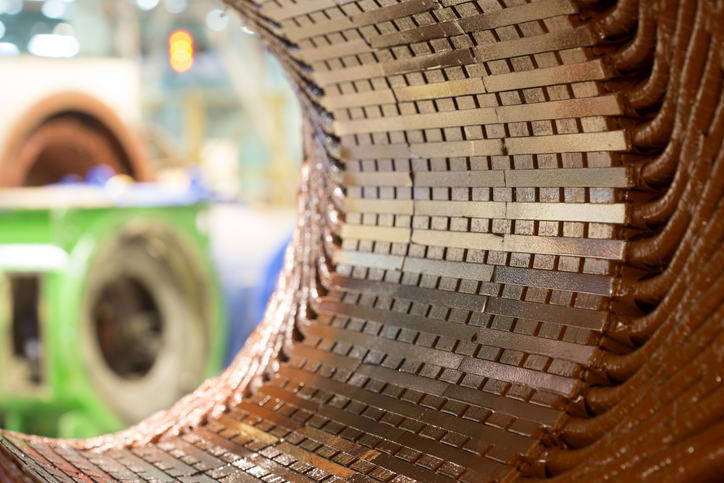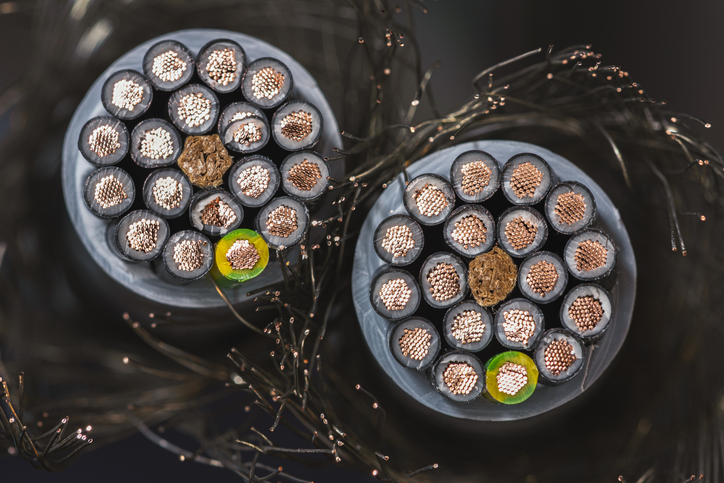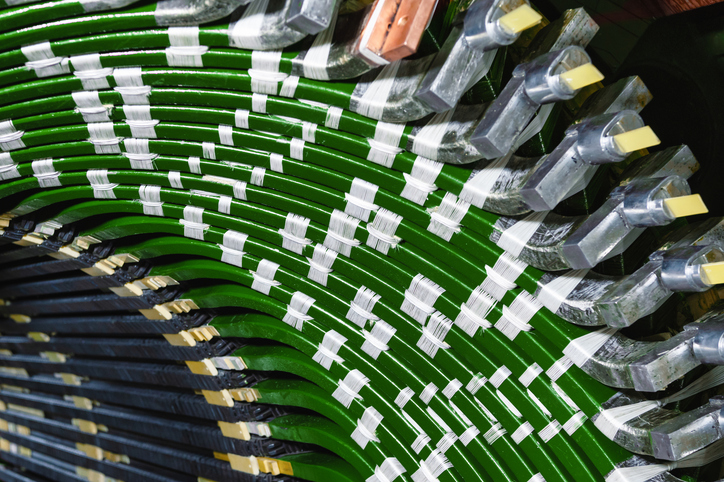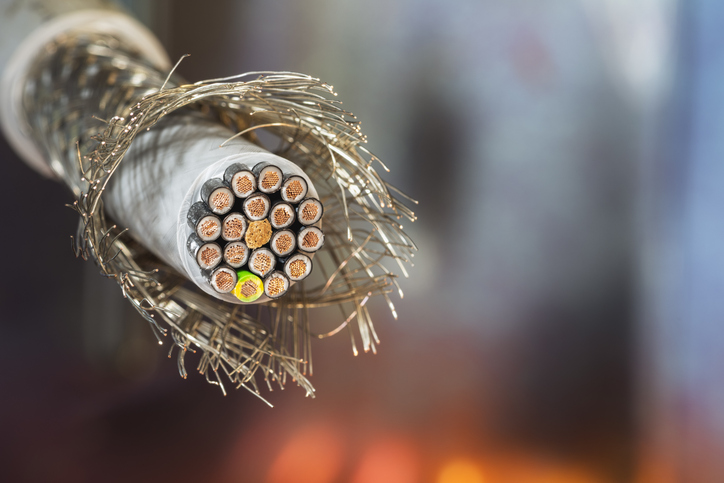Examining the Critical Role of Insulation in Motor and Generator Performance
In high voltage electrical systems, the quality of insulation materials used in form-wound stator coils directly impacts system performance, safety, and longevity. As power demands increase and space constraints tighten, engineers face growing challenges in selecting the optimal insulation solutions. Electrolock has been engineering innovative insulation materials since 1957, helping clients navigate these complex requirements with custom-designed solutions.
Today, we’re sharing some of our insights about material selection, testing, and custom solutions as they relate to form-wound stator coils — and the performance of the motors and generators they serve.
Custom Solutions for Your Specific Applications: Reach out to the Electrolock team today to begin discussing your next electrical insulation project.
Understanding Form-Wound Stator Coils vs. Random-Wound Systems
Form-wound coils represent the sophisticated end of the motor and generator spectrum, used primarily in medium to high voltage applications. Unlike random-wound systems that use round wire in low-voltage motors, form-wound coils are precisely shaped and then insulated with specialized materials like mica tape. This configuration allows for higher performance but requires more sophisticated insulation solutions to manage the increased electrical, thermal, and mechanical stresses.
Key Materials in High Voltage Coil Insulation
The foundation of high voltage coil insulation begins with mica — specifically mica paper. This natural mineral is processed through a pulping procedure similar to wood pulping, creating a material with exceptional dielectric properties. The mica paper is then typically laminated to carrier materials such as:
- Polyester film
- Polyester fleece
- Fiberglass
These composite structures combine the electrical isolation properties of mica with the mechanical support of the carrier materials. In most applications, an epoxy binder system provides the final cohesive structure, though silicone binders may be used in specialized high-temperature, compact applications.
How Insulation Directly Affects Power Output
In high voltage coils, the relationship between insulation and power is straightforward but critical: power equals voltage times current. To maximize power in a fixed space, engineers need to optimize for maximum current capacity, which means:
- Using thinner insulation materials that maintain the required dielectric strength
- Maximizing copper fill factor in the available space
- Efficiently managing heat dissipation to prevent performance degradation
Thinner, high-performance insulation systems allow for more copper conductor material within the same dimensional constraints, directly increasing the current-carrying capacity and thus the power output of the system.
The Evolution of Form-Wound Stator Coil Insulation Technologies
Over the past decade, the industry has seen significant shifts in insulation approaches for high voltage coils:
- Movement from multi-layer systems (triplex or four-layer) to more efficient two-ply designs
- Increasing mica content within the same thickness profile (e.g., 160-gram paper instead of 120-gram)
- Development of advanced binder systems with higher glass transition temperatures
- Engineering materials that balance dielectric strength with improved thermal conductivity
These advancements have enabled higher power densities while maintaining or improving reliability — a critical consideration as industries demand more compact, efficient motor and generator systems.
Balancing Competing Performance Requirements
The challenge in coil insulation design lies in balancing competing properties:
- Dielectric Strength vs. Thermal Management: Higher voltage requires better electrical isolation, but this often comes at the expense of thermal conductivity.
- Mechanical Durability vs. Thickness: Thinner materials allow more copper, but may compromise durability during manufacturing and operation.
- Performance vs. Cost: Premium materials offer superior properties but must be justified against economic constraints.
Engineers must carefully consider the specific voltage and thermal requirements of each application when selecting insulation systems. This balancing act becomes particularly challenging in extreme environments like electric vehicle motors, where space constraints, heat management, and reliability requirements are especially demanding.
The Value of Expert Engineering Support for Form-Wound Stator Coils
While insulation materials might appear simple, their application in high voltage coil systems requires significant expertise. Some procurement professionals may view these materials as commodities, focusing primarily on price. However, there are dramatic differences between economy and premium solutions — differences that become apparent when materials tear during shipping or fail prematurely in service.
Working with specialists — like the experts at Electrolock — provides advantages beyond just material supply:
- Access to engineers who understand the complex interplay of electrical, thermal, and mechanical properties
- Support for problem-solving when facing challenges like premature coil failure, poor resin penetration, or thermal management issues
- Testing capabilities to validate custom solutions for specific applications
- Responsive service support throughout the product lifecycle
Achieve Engineering Success from the Inside Out With Electrolock
Proper form-wound stator coil insulation selection is fundamental to achieving optimal power output, efficiency, and reliability in high voltage systems. Electrolock has always taken pride in building success from the inside out — recognizing that although insulation may be hidden from view, it makes all the difference to system performance.
For engineers designing high voltage motors, generators, or other coil-based systems, partnering with insulation specialists who understand both the materials and their application provides significant advantages. From material selection through testing and into production, expert guidance ensures that power, efficiency, and reliability goals are met without compromise.
Contact Electrolock’s team to discuss how optimized form-wound coil insulation solutions can enhance the performance of your high voltage electrical systems.




